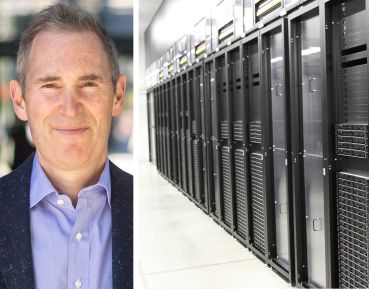Proptech Beelines for Federal Funds to Retrofit Government Properties
Washington's willing to spend nearly $2 billion to green its own buildings, including turning dozens all-electric
By Philip Russo July 18, 2023 6:00 am
reprints
The federal government will attempt to clean up its own carbon emissions act using nearly $1 billion from the Inflation Reduction Act (IRA), and proptech companies will be part of the pilot program that hopes to get the job done.
In June, the federal General Services Administration (GSA) announced plans to allocate $975 million in IRA funding to use emerging and sustainable technologies to upgrade federal buildings across the country. Plans include spending up to $13.5 million for clean energy technologies to lower energy costs and reduce carbon emissions, establishing an ambitious path to achieve net-zero emissions from federal buildings by 2045, according to the government.
By leveraging IRA funds, GSA expects to more than double the $975 million investment in sustainable technologies, deploying a total of $1.9 billion in private and public funding to support sustainable technologies.
The IRA funds will impact about 40 million square feet — roughly 20 percent — of the federal portfolio that the GSA manages and expand the agency’s sustainable building portfolio to 134 million square feet. Through these projects, 28 buildings are targeted to achieve net-zero emissions, with 100 more buildings becoming all-electric, adding to approximately 200 that are already all-electric.
“Probably the most important message is this is a good thing,” said Greg Smithies, partner and co-head of climate investing at Fifth Wall, a Los Angeles-based proptech venture capital firm. “It is a lot of money, and then through IRA and other incentives they’re expecting it could be roughly double that amount of money.
“However, I’d like to temper that a little bit by saying it’s probably going to take us $18 trillion to decarbonize our real estate industry. So we do need to put it into perspective. Two billion dollars is a lot of money, but it’s scratching the surface.”
The government has chosen the right path in its overall decarbonization plan by selecting a smaller number of buildings and trying to get them down to net zero while fully electrifying them, said Smithies.
“The reason why this is, from our point of view, much more important is that it means this money is going to be bringing a lot of the more complicated and difficult technologies down the cost curve for other people,” he said. “No one other than the government is in a position to be able to do so. It’s going to help some of those technologies that aren’t technologically or financially viable for the rest of the market to get there with the government installing them now.”
One proptech company that is looking to work with the GSA in the federal buildings decarbonization plans is Kelvin (formerly Radiator Labs), a Brooklyn-based proptech company that has deployed more than 15,000 energy-efficient systems to decarbonize older buildings throughout the U.S., including for Department of Energy pilot sites and the New York City Department of Education.
Kelvin operates in schools, apartment buildings and public housing complexes to reduce heating costs by as much as 45 percent. It also enables 80 percent decarbonization for 80 percent less than full-building electrification would cost, according to the company.
“I have a lot of love for the name Radiator Labs, but it shoehorned us into a very specific box with a lot of investors and customers,” said Marshall Cox, co-founder and CEO at Kelvin.
The early 2023 rebranding to Kelvin came about as part of the company’s $30 million Series A raise in May, said Cox.
“Part of this raise was an expansion of our vision and capability,” Cox said. “We’re moving aggressively into decarbonization as a whole, and, in particular, this idea of resource-efficient decarbonization made possible by hybrid electrification, which uses commodity heat pumps to electrify the majority of space heating, and then falling back on the legacy heating system when it gets really cold outside.”
Kelvin’s thermostatic radiator enclosures (called Cozys), heat pumps, and thermal batteries are being evaluated by the GSA for its decarbonization pilots program, he said.
Along with the other proptech companies being considered, Kelvin does not yet know how much funding it will receive.
“They [GSA] actually said this program is to use technologies that are early stage and really kind of not yet proven,” said Smithies. “They said let’s go and find all the gaps in decarbonizing a building that existing technologies do not solve, ignore the ones that we can solve, and only focus on the ones that we cannot currently solve. Then identify early stage technologies that we think might be able to solve them. But it means you’re going to have to pilot these things.”
In that regard, Kelvin’s heat pumps are a major component of its business, as well as a focus of retrofitting buildings such as the ones the GSA is addressing through its pilots.
“An air window air conditioner is a heat pump, but it doesn’t have a reversing valve,” said Cox. “So, if you imagine taking your air conditioner and literally turning it around in a window, it would heat your apartment. A heat pump is the same basic technology, but it’s able to flick a switch and provide heat instead of cooling in the winter. And, of course, it still provides cooling. You don’t lose that capacity.”
The improved efficiency, cost savings and carbon reduction from such technology is significant, he added.
“What we’re doing with hybrid electrification involves all these buildings that have radiators, either steam or hot water,” said Cox. “Those distribution systems are relatively inefficient, just by virtue of how those systems work. Electrification for this building segment is very tough, not because heat pumps are expensive, but because implementing them in a building without ductwork is dramatically expensive and often inconvenient for tenants.”
As an example, Cox said that New York University has a dormitory that is the only fully electrified building in New York City right now. However, the transition was so difficult structurally that NYU had to vacate the building for more than two years to make the change.
Kelvin hopes to impress the GSA and consumers that its technology suite of products can make the electrification transformation process quicker and less expensive.
“Even though the heat pump you can buy at Home Depot can do about 75 or 80 percent of the heating for the entire winter in a place like New York City, it’s that last 20 percent that requires these cold climate heat pump systems,” said Cox.
“Our perspective is let’s decarbonize 80 percent of our heating load easily with these systems, and then let’s have a backup system for really cool days when another kind of heat pump wouldn’t be efficient. So we deploy a slightly modified heat pump and have our Cozy system that maximizes the building’s backup heating system. We control whether the system is working off high-efficiency electric or gas, as the winter weather requires. That gets us to about 75 percent decarbonization for 5 to 10 percent of the implementation cost.”
Overall, even before the new funding was announced, the GSA had been proactive in getting proptech industry input through its Green Proving Ground (GPG) program in partnership with the U.S. Department of Energy, said Jennifer Place, a principal with the climate tech team at Fifth Wall.
“We’ve been involved generally with the GSA and the Green Proving Ground, which has been going on for a number of years,” said Place. “But I think the inflation Reduction Act and the fact that there’s now a bigger focus on decarbonization on climate really accelerated the engagement there over the course of the last year.”
Fifth Wall is part of a broader coalition working with the GSA to identify some of the key challenges and opportunities, given the VC firm’s more than 100 corporate partners across the real estate asset class, Place said.
“I think from our perspective, we brought quite a unique point of view, especially as we are canvassing largely the earlier stage startup ecosystem in the space and being able to see around the corner of what is coming in terms of the technology,” Place said. “I don’t think many people realize that the GSA actually manages the largest real estate portfolio in the country. They’ve got thousands of federal buildings that account for roughly 370 million square feet. So that effectively makes them the country’s largest landlord. They also manage one of the largest fleets in the country with over 240,000 vehicles.”
Areas of discussion that emerged from the conversations between GSA and real estate industry members at the table included addressing the issues of embodied carbon in building materials, specifically concrete. Another issue concerns the ability to closely track in real time how the technologies being adopted affect a building’s energy consumption and emissions.
“So not only to be able to do that in a vacuum, but also when stacking different technologies as part of this program,” Place added. “For the first time, the GSA has integrated carbon-tracking software into its program. This is one of the areas where we’re incredibly excited that they’ve decided to partner with two of our portfolio companies, nZero and Cambio.”
The question of whether the GSA’s funding is a watershed for proptech innovation remains up in the air.
“I don’t know if this is the tipping point,” said Kelvin’s Cox. “They’ve been doing this for a while and focusing on decarbonization increasingly over time. Now there is a lot more motivation and focus on decarbonization as a whole, particularly with the increased funding which allowed them to award more technologies this year. So I think it could be considered a big point in funding decarbonization, but it’s been building for a while.”
Philip Russo can be reached at prusso@commercialobserver.com.


